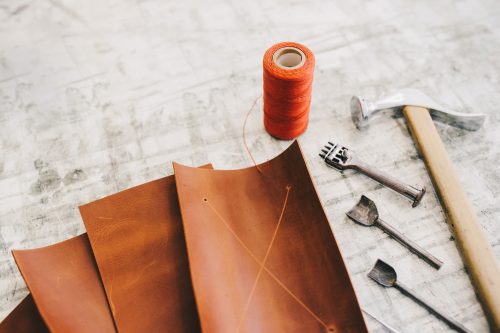Are you in the midst of a knitting project and have run out of yarn? Maybe you're at a point in your project when you need to switch colors. Every crafter comes across these predicaments at some point. This means you need to utilize the technique of joining yarn to keep the project going. Are you unsure how to join a new ball of cotton yarn? We have created this step-by-step guide showing you how to join your new yarn and give you insights on when and why this technique needs to be used.
The united join method is one of the most popular techniques for joining yarn. Follow these steps:
- Leave a strand of the original yarn
- Lay new yarn across your needle
- Hold the old and new yarn together
- Knit a couple of stitches
- Let go of the old yarn
- Continue knitting
- Weave in loose strands
Now you know the basic steps to the united join method, but there are other ways to join new yarn. Read on as we discuss these steps in detail and touch on these other methods, including when they should be utilized.

When Do You Need To Join A New Ball Of Yarn?
You can join new yarn at the beginning, middle, or end of a row. With some garments, joining new yarn has been done in places that are not so obvious, like on the side or underarm of a piece.
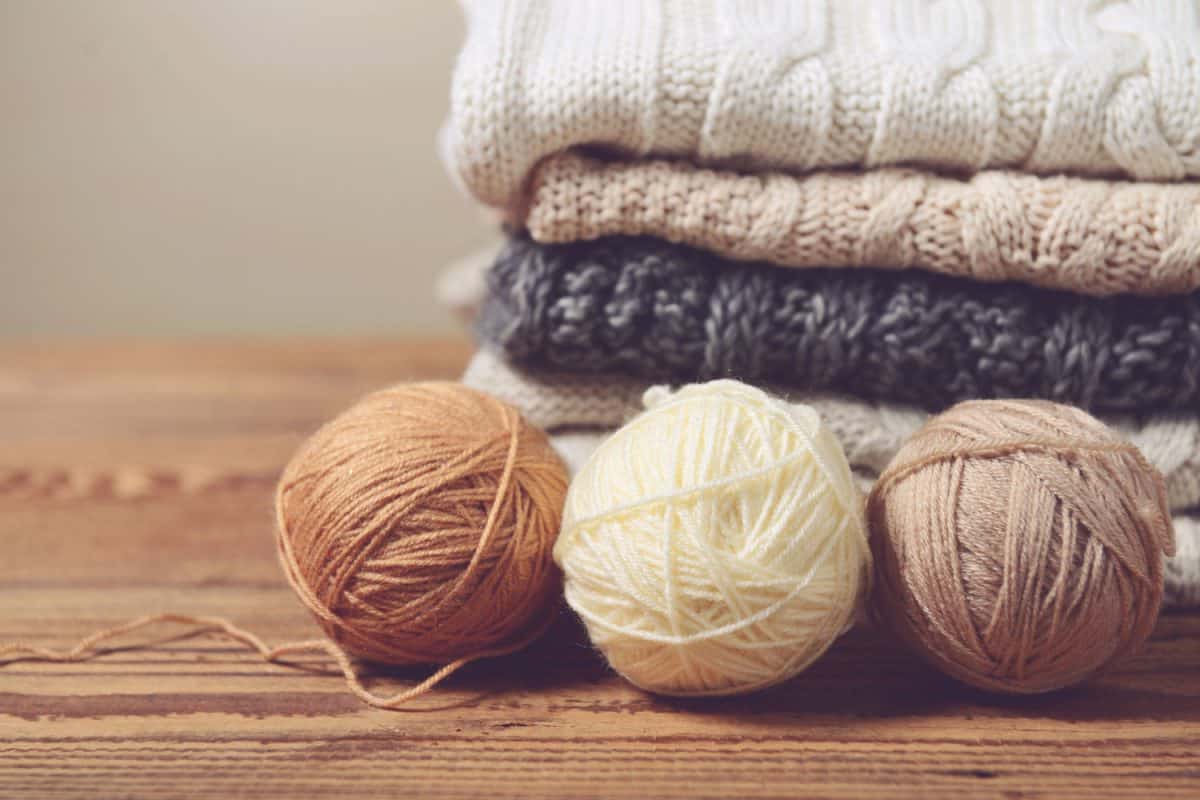
You join new yarn when you run out of your current ball, or you need to change colors. Have you abruptly run out of yarn? Don't worry. Unravel a couple of stitches to leave a long tail and begin to join your new ball of yarn like usual.
Read more on our blog post, 4 Of The Best Cotton Yarns For Dishcloths.
Steps To The United Join Method
This method of joining a new ball of cotton yarn offers quite a bit of tension across the new and old yarns. This is great for the integrity of your final project. Let's take a closer look at the steps in this method.

1. Leave A Strand Of The Original Yarn
When you are coming to the end of your original yarn, you will want to leave a strand of yarn hanging down. This strand should be at least 10 inches (ca. 25 cm) long. You can go longer, but do not leave a strand shorter than this.
2. Lay New Yarn Across Your Needle
Lay your new yarn across your needle now. You want the new yarn to be positioned, so the yarn tail sticks out the front of your knitting.
3. Hold The Old And New Yarn Together
Grab onto both your old and new strands of yarn. You will start working with them as if they are one piece of yarn.
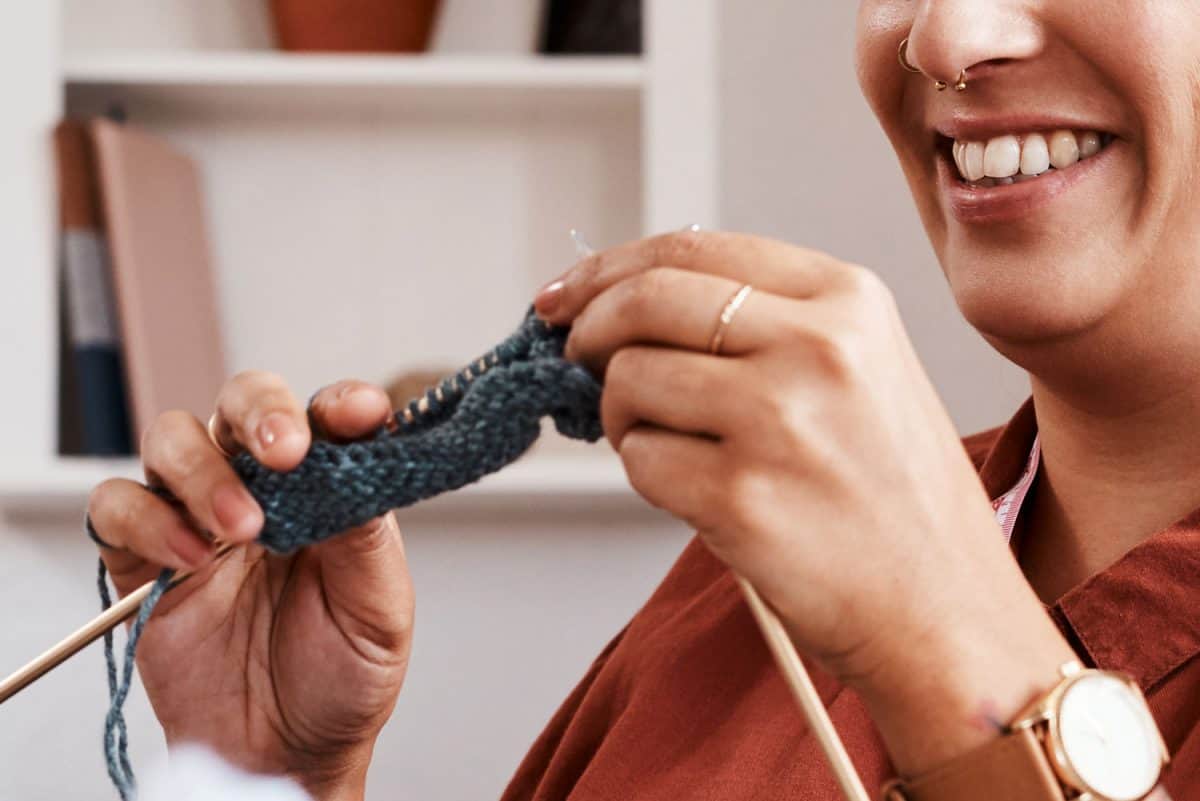
4. Knit Combined Stitches
With your combined yarn, knit three or more stitches as planned in your project. These stitches will appear to have double strands of yarn, but treat them like the rest of your single stitches.
5. Let Go Of The Old Yarn
With your new yarn set knitted in with your project, you can drop the strand of old yarn. There will still be some length hanging down. This is normal.
6. Continue Knitting
With just your new cotton yarn in hand, continue knitting your project. Notice there are two strands of yarn hanging own at the start of the join. This is to be expected.
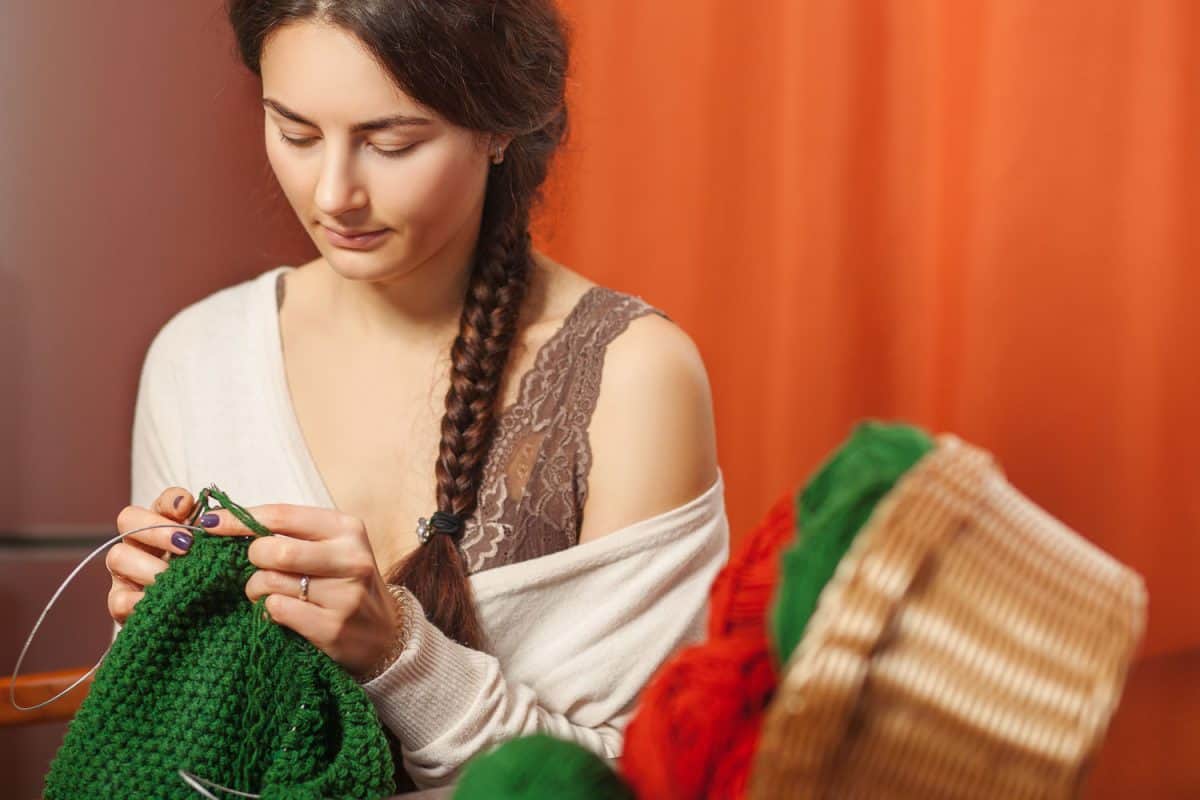
7. Loose Strands
With a finished knitting project, go back to weave in your old yarn strands. You can weave these strands in to seem invisible.
The video below showcases two methods of joining yarn. The second method is the united join we discussed above.
Notice, this method does not use a knot to join the yarns. Other methods do call for knots, but knots have the potential to unravel. Which method you end up using all comes down to preference and comfort levels.
How Do You Join A New Ball Of Yarn When Knitting In The Round?
Knitting in the round, or circular knitting, is commonly used when creating socks, sweaters, summer tops, and anything else with a tubular shape. When you are knitting in the round, you are working with circular needles. Does this change the way you join a new ball of yarn? In some ways, gaps between old and new yarns will appear more noticeable. There are ways to get around this. Let's take a closer look.
Amazon offers a variety of mini cotton yarns here.
You can use the united join method mentioned above when knitting in the round. You can test your hand at other methods too. The invisible joining method allows you to join a new ball of yarn when knitting in the round without leaving a noticeable gap between stitches.
The video below showcases the steps in this invisible joining method.
Read more on our blog post, Does Cotton Yarn Soften After Washing?
How Do You Join Yarn In The Middle Of A Row?
When working with a limited supply of yarn or expensive material, joining yarn at the end of a row is not always possible. Maybe you just want to change colors mid-row. For any reason, joining new yarn in the middle of a row can be done.
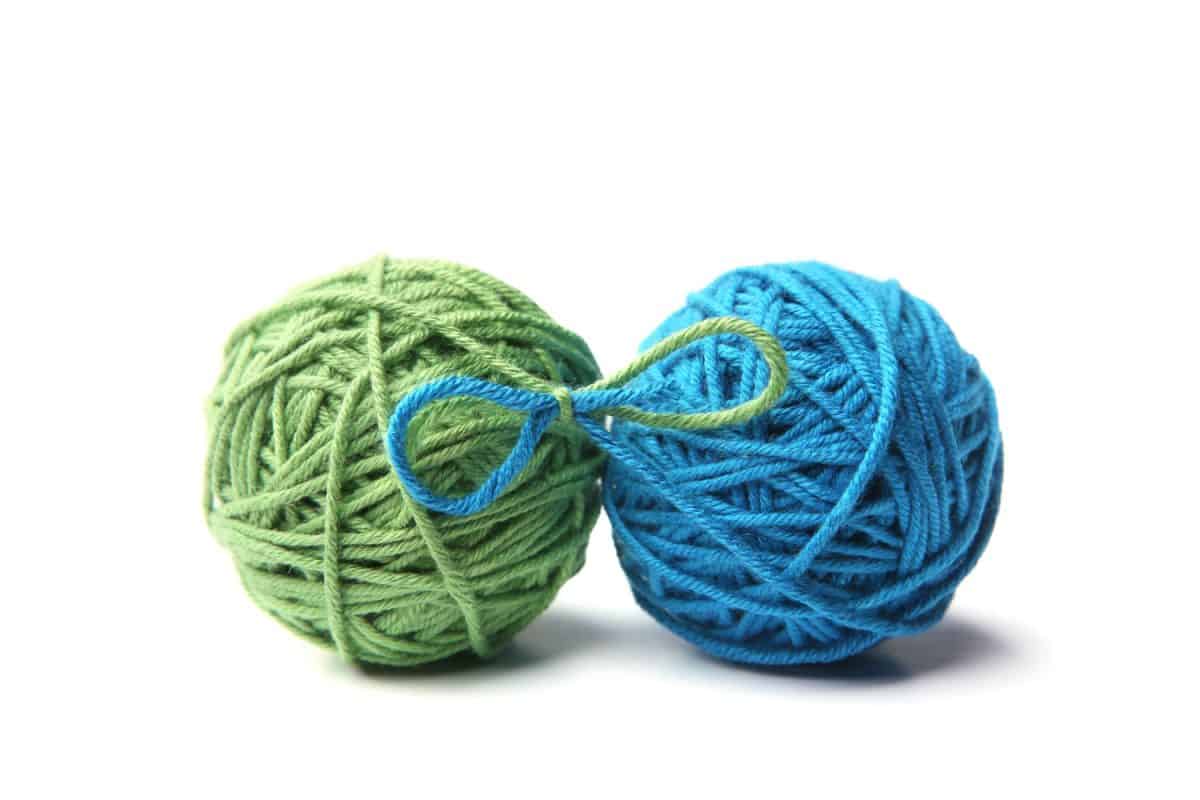
You can utilize each of the methods we have laid out in this article already. Using the invisible join can offer a seamless transition into the next ball of yarn. The option is to begin knitting with the new yarn straight away, tying a temporary knot where your original yarn began. If you use this method, leave 4-5 inches of yarn tails to weave them back in later.
How Do You Join Two Strands Of Yarn Together?
Joining strands of yarn together can be done in a variety of ways. Which way you choose to join your yarns depends on what you like working with or where in your row you are joining. Keep in mind; only certain knotless joining methods work for cotton yarns. Let's talk more about one of these methods.
You can find soft cotton yarns here on Amazon.
One way to join two strands of yarn is by using a method called the magic knot. For this knot, you will pass your new yarn under your old one and cross them over. Pass your new yarn through the loop and pull tight. Do the same with the other strand of yarn, leaving you with two knots. Pulling on both strands of yarn will bring the knots close together, making them “invisible.”
The video below shows you this magic knot and two other methods of joining yarn with a knot.
Read more on our blog post, Hot To Block Cotton Yarn: A Detailed Guide.
How To Join Yarn Without A Knot?
Not a fan of joining your yarn with a knot? Many crafters are not due to the unpredictability of knots and the fear of a project unraveling. The good news is there are ways of joining yarn without the use of knots.
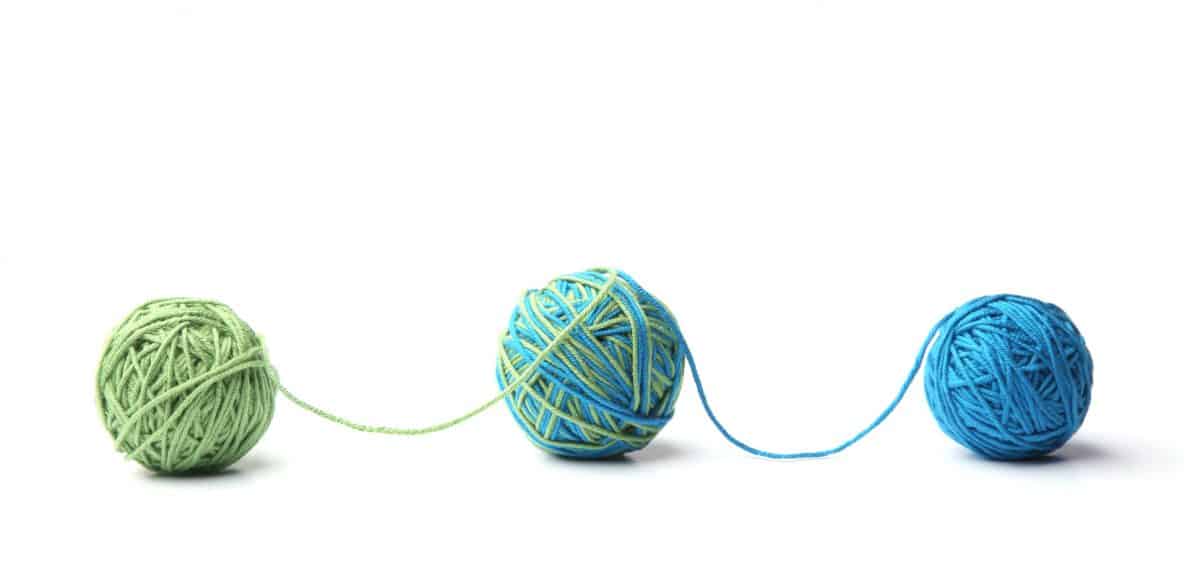
You can join yarn together without a knot using the Russian join. The Russian join involves using a tapestry needle to push one yarn through the other. This is a neat, strong join that leaves no tails to weave in later. This method takes a little time but is useful and can be used with all fibers.
Get tapestry needles here on Amazon.
The video below shows you how to do this Russian join with cotton yarns.
Concluding Thoughts
There are many methods to joining a new ball of cotton yarn during your project. There are different ways, and you can complete these tasks at any point of your row. If you are joining new yarn in the middle of a row, it may be a good idea to use one of the more invisible joining methods we talked about.
Joining at the end or the start of a row may give you more flexibility with methods. We hope you found this article insightful when joining your new ball of yarn, and maybe you found a piece or two of inspiration within this article.
Are you wanting to expand your crafts using other materials? Have a look at our blog post, 17 Types Of Yarn For Crochet And Knitting [By Material, Weight, And Style].

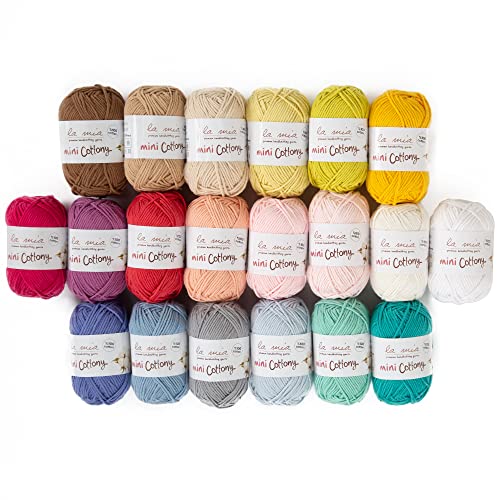


![Read more about the article Can You Glue Fabric To Leather? [Products & Steps Included]](https://craftsbliss.com/wp-content/uploads/2023/01/In-workroom-girl-makes-purse-with-brushglueleather.-500x333.jpg)

